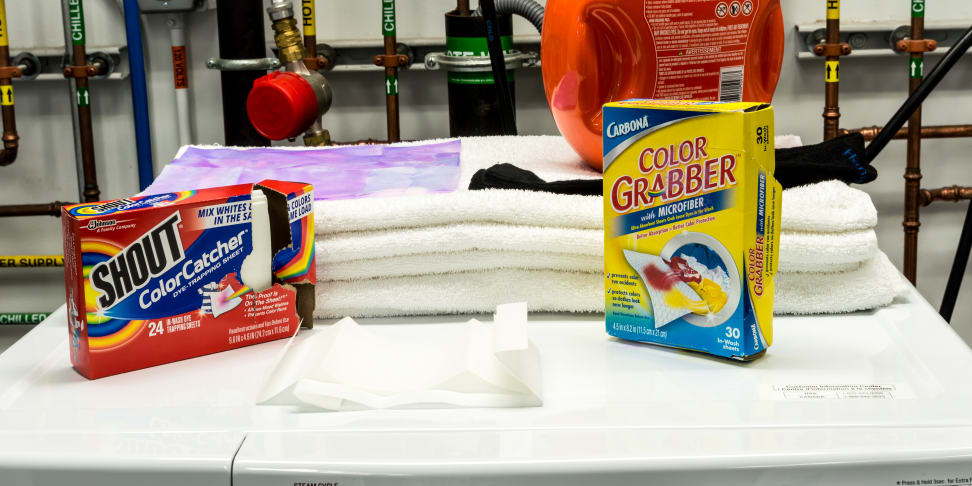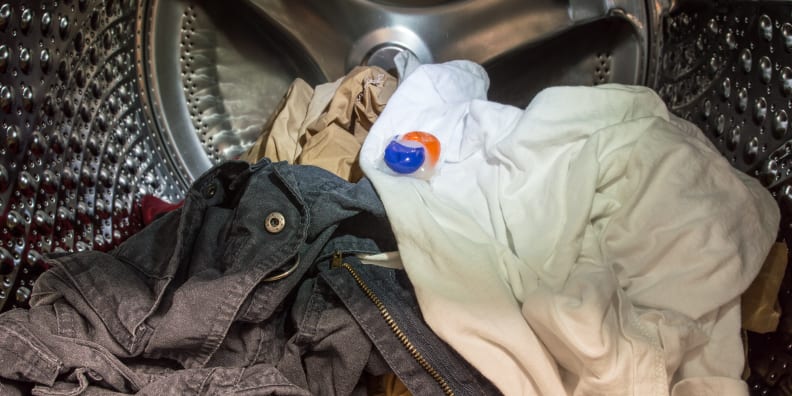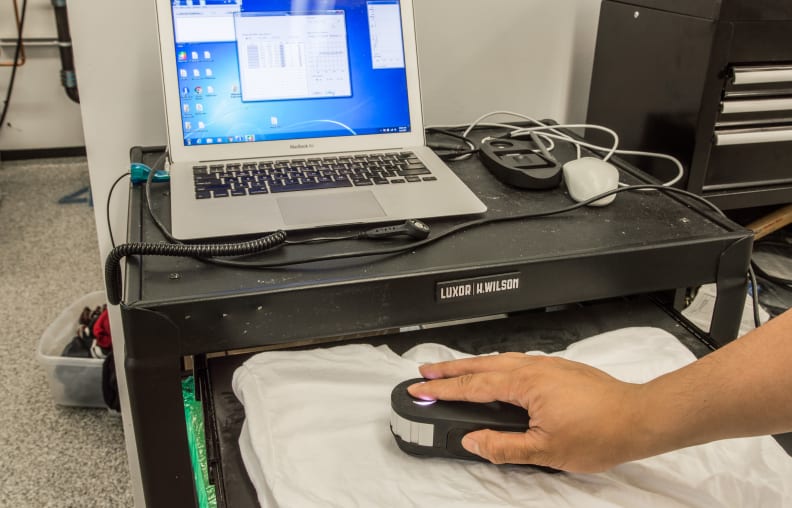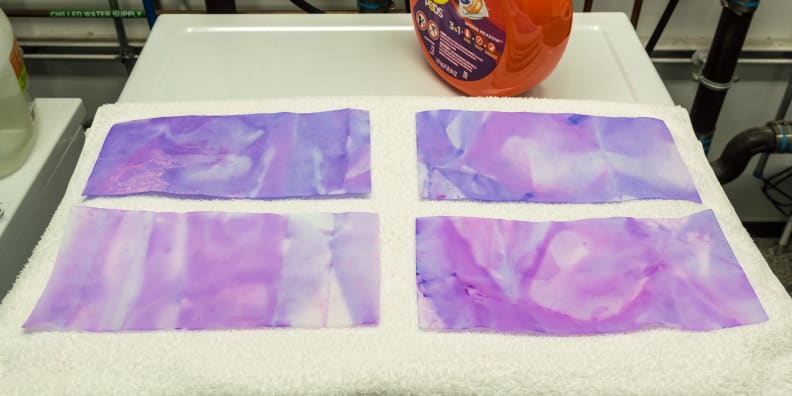Can this laundry sheet keep your white clothes from turning pink?
Consider it insurance against a red sock in your white laundry
 Credit:
Reviewed.com / Jonathan Chan
Credit:
Reviewed.com / Jonathan Chan
Recommendations are independently chosen by Reviewed's editors. Purchases made through the links below may earn us and our publishing partners a commission.
Here at Reviewed.com, we test a lot of washers and dryers in our laundry labs. We also test laundry products so you don’t have to experiment with them on your own clothes.
Consider the color catcher, a product that claims you can launder mixed loads of whites and colors without any color transference. Both Shout Color Catchers and Carbona Color Grabbers are dye-catching sheets that promise to protect your whites and lights by absorbing loose dye in the wash before it deposits onto your clothes.
But do they work? I've been been putting them in my own laundry for years, but our product tester was skeptical. So the two of us took to the lab to find out the truth.
Sorting it out
Let’s back up for a moment. You sort your laundry, right? It’s a washday basic—clean your whites and colors separately, and keep your dark jeans out of the drum when your delicate undies are sloshing around.

You're supposed to sort the laundry, but we ran some mixed loads, to test for color runs.
But what if you didn’t have to sort? The folks behind the color catcher claim that a stray red sock or dark jeans won't spell disaster for your good towels. That means you could save time, money and energy compared to running micro-loads of sorted clothes.
Catcher in the... dye?
To put that claim to the test, our skeptical product tester prepared a bowl of purple dye using two cups of water and two grams of colored powder. He then added two Shout Color Catchers to the bowl, and left them to soak for two hours. (We decided to work with Shout Color Catchers, since they are more widely available.)

We tested to see whether the Color Catchers would actually absorb color from a bowl of purple dye. You can see the before and after of our experiment, showing that the Color Catchers pulled the dye right out of the water.
The now-stained color catchers were soaked in hot water, then placed on a white towel to test for leaching. None of the absorbed dye transferred onto the towel.
Our tester repeated this experiment with one cup of water and one gram of dye in the bowl, and got similar results.
This tells us that dye catchers do absorb dye, and they don’t redeposit it onto other things.
What about those pink sheets?
You’ve probably heard stories about a disastrous laundry accident that turned a white load pink or blotchy gray. We tested to see whether this is likely to happen under normal conditions. Here's what we did.
We collected a load of new white T-shirts, new white sheets, assorted colored clothing from the floor of a college kid's room, and some new black socks.
We pre-washed the new white items to get rid of any sizing coatings. We did test runs to make sure no dye was coming from the water or the detergent.
We test-washed three loads in a new front-loader washing machine, running Normal/Hot loads.
We used a spectrophotometer—essentially a "color scanner"—to measure the change in color of each item before and after the following loads:

We scanned a white T-shirt to see if the color had changed.
• Load #1: We washed three white T-shirts, two sheets, one black sock, and did not include a dye catcher. When we measured, whites had darkened by 1.5%—a difference undetectable to the naked eye.
• Load #2: We washed mixed color clothing, one white T-shirt, and a dye-catcher. We didn't find any evidence of colors running, and there was no change to the T-shirt’s color.
• Load #3: We washed mixed color clothing, one white T-Shirt, and one Color Catcher. The dye-catcher got 41% darker, but the white T-shirt’s color remained unchanged.
In other words, we found that a dye-catcher can absorb dye in the wash and keep it from transferring onto other clothes. But is it really necessary?

Once the Color Catchers absorbed the purple dye, we placed them on white towels to see if the color would transfer. It did not.
Should you add dye-catchers to your laundry routine?
Both our skeptic and our believer came to an agreement: You probably don't need to use a dye catcher in your laundry. It was hard for us to create any obvious color transfer between clothes. In the real world of laundry, that's a positive.
Even without Color Catchers, you can run a load of mixed colors together, but to avoid any chance of color runs, we encourage you keep separating whites from colors, and wash non-colorfast items—for example, dark jeans—separately.
That said, if you do laundry for a family that sometimes “helps out” on laundry day, an occasional dark or brightly-color item may find its way into the white wash. So, you might consider buying a box of dye-catchers and putting them to use with your white laundry. Just think of them as "laundry insurance."




